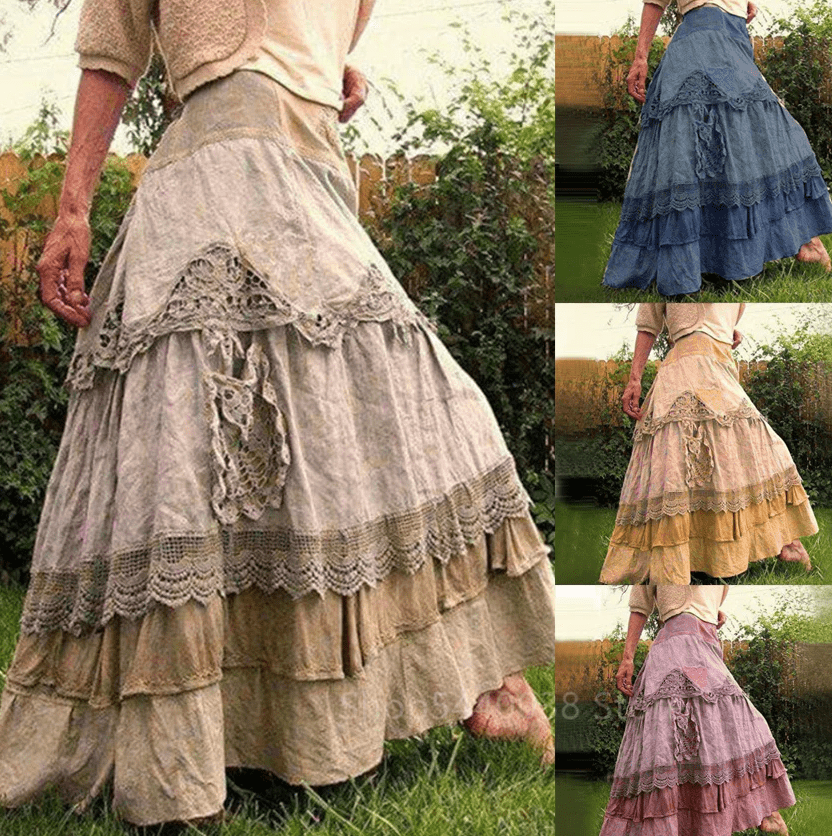The 14th through the 17th centuries saw the Renaissance Skirt, which was characterized by a rebirth of humanism and the beauty of nature in art, culture, and fashion. The skirt is a notable example of a garment that embodies the social mores, creative expressions, and technological innovations in textile manufacturing throughout this period. The Renaissance skirt represented money, rank, and uniqueness in addition to its utilitarian uses.
Table of Contents
Historical Context
From its beginnings in Italy, the Renaissance Skirt progressively extended throughout Europe, influencing fashion styles in the process. The demise of medieval fashions, which had prioritized long, flowing clothing with minimal attention to the human form, defined the era. Rather, Renaissance fashion started to emphasize the body’s inherent curves by embracing structure and shape. Skirts, with their elaborate patterns and opulent materials that reflected the creative triumphs of the era, evolved into a vital part of women’s clothing.
The social order had a big impact on fashion throughout this time. The wealthier classes decked themselves out in gaudy skirts composed of velvet, silk, and brocade. These skirts were frequently adorned with ornate needlework, lace, and gems, which served as a prestige symbol for the wearer. Women from lesser social classes, on the other hand, wore simpler skirts made of less expensive materials, highlighting the stark disparities in social status.
Design and Construction
Renaissance skirts were distinguished by their ornate designs and voluptuous silhouettes. The skirts frequently had multiple layers, with a petticoat layered underneath to give them more fullness and depth. The goal of these layers was to draw attention to the waist and hips by creating a silhouette that resembled a bell. The employment of supports, such as farthingales or bum rolls, further strengthened this design, allowing skirts to reach astonishing widths. The skirt’s length varied, but it usually fell to the ground—a design that persisted throughout the Renaissance. The late Renaissance saw a reduction in skirt length as fashion changed, occasionally baring the ankles and highlighting ornate shoes. The season, the event, and the wearer’s social standing were all represented in the fabric selections. In the winter, thicker textiles and darker colors were preferred; in the summer, lighter, brighter colors were trendy.
Artistic Influence
The design of skirts was one of the key fashion trends that was influenced by Renaissance painting. Well-known artists from the era, including Titian, Raphael, and Botticelli, portrayed women in their works to demonstrate the prevailing fashions. These pieces of art affected the style and construction of skirts and provided a visual documentation of current fashions. Floral and natural motifs were included into skirt patterns by artisans who started to take inspiration from the natural world. Fabrics were frequently painted or embroidered with patterns, and textiles had elaborate motifs that referenced Renaissance art themes. Because of this creative impact, skirts became more than just a practical item of clothing—they became a vehicle for women to express their unique personalities through their wardrobe.
Cultural Significance
The Renaissance skirt was a reflection of the social and cultural dynamics of the day as much as a fashion statement. Women started to claim their identities, and this led to the development of dress as a vehicle for self-expression. Bodices that drew attention to the waist and emphasized femininity and elegance were frequently worn with skirts. Furthermore, ladies started holding elaborate dressing ceremonies, turning the process of getting dressed into a social ritual. Even in the context of personal clothing, social hierarchies were reinforced by the layers and intricate designs of the skirts, which required help from maids. The importance of fashion was further ingrained in the social fabric of the Renaissance as women’s clothing was frequently seen as a reflection of their morality and character.
Legacy of the Renaissance Skirt
Beyond its historical setting, the Renaissance skirt has left a lasting legacy. Modern fashion was founded on the period’s emphasis on individual expression, artistry, and workmanship. The methods and styles created in this period still have an impact on clothes now; modern skirts frequently mimic the shapes and adornments of Renaissance fashions. Renaissance skirts can be seen in fashion presentations, historical reenactments, and costume designs today as symbols of grace and refinement. This era serves as a common source of inspiration for designers, who use embellishments, opulent fabrics, and billowy skirts in their creations.
Conclusion
The rich history and cultural significance of fashion from the fourteenth to the seventeenth century are attested to by the Renaissance skirt. Through its elaborate patterns, creative inspirations, and societal connotations, the skirt represented women’s changing identities as well as the silhouette of a bygone period. The Renaissance skirt is a timeless representation of grace and originality because, as we reflect on this era, we are reminded of the significant influence that fashion has on culture, identity, and self-expression.
